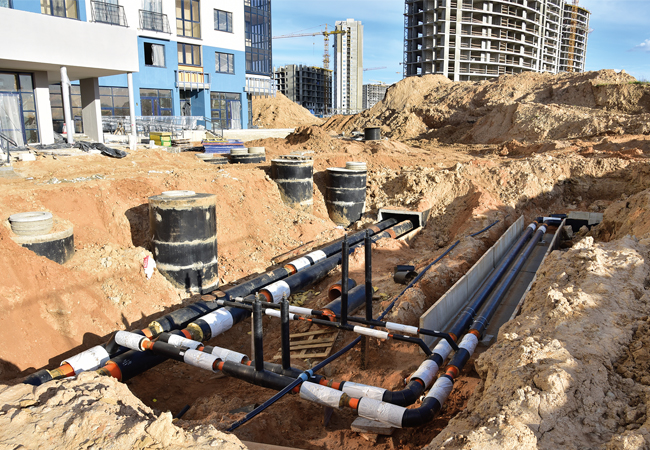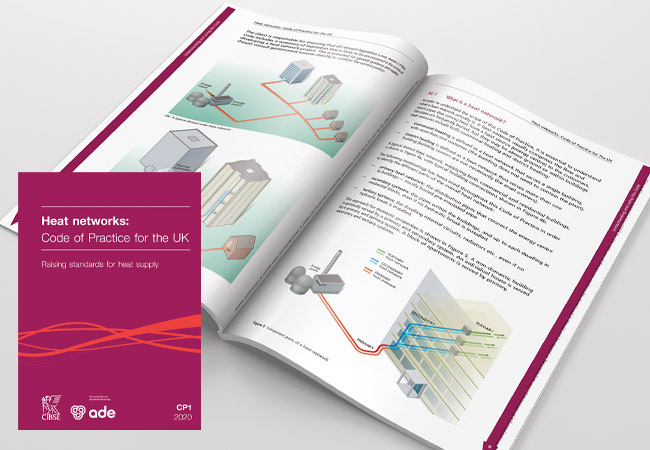
The 240-page Code is almost three times larger than the previous version
CP1 (2020) Heat networks: Code of Practice is a major update to the 2015 version, and a huge step forward for the industry.
Developing this edition of the Code, published by CIBSE and The Association for Decentralised Energy (ADE), has involved a vast amount of consultation. Gaining widespread consensus, it has helped to define the heat networks sector as a maturing growth area that can make a significant contribution to decarbonising heat across the UK.
More than 50 experts came together to agree the Code. Three major rounds of consultations – including one public round – gave rise to contributions and comments from around 100 others, generating 3,000 comments. It’s been an epic journey, but the industry is much the better for it, with everyone on the same page.
CP1 (2015) proved to be a catalyst for major change in the industry; it is doubtful that we would have been able to drive the sort of success we have had without it. Today, we have a much greater number of high-performance schemes, which are largely a product of the CP1 (2015) initiative. It was always recognised, however, that the Code of Practice would need to be updated at intervals, to reflect new experience and understanding, feedback from the industry, changes in regulation, and results from research projects.
So, what are the key changes in CP1 (2020)? To give you a flavour, here are 10 of the most significant ones.
1. Customer satisfaction
A new theme in the Code is additional focus on providing customers with affordable heat and a reliable service. Customer satisfaction starts at the briefing stage and runs through all stages of CP1.
We need to make sure the end-user is happy with the service. If
they are not, we have failed. CP1 is now complementary to the Heat Trust (the non-profit organisation that sets standards on customer protection) and sets early commitments – and eventual requirements – to sign up to Heat Trust for all heat networks.
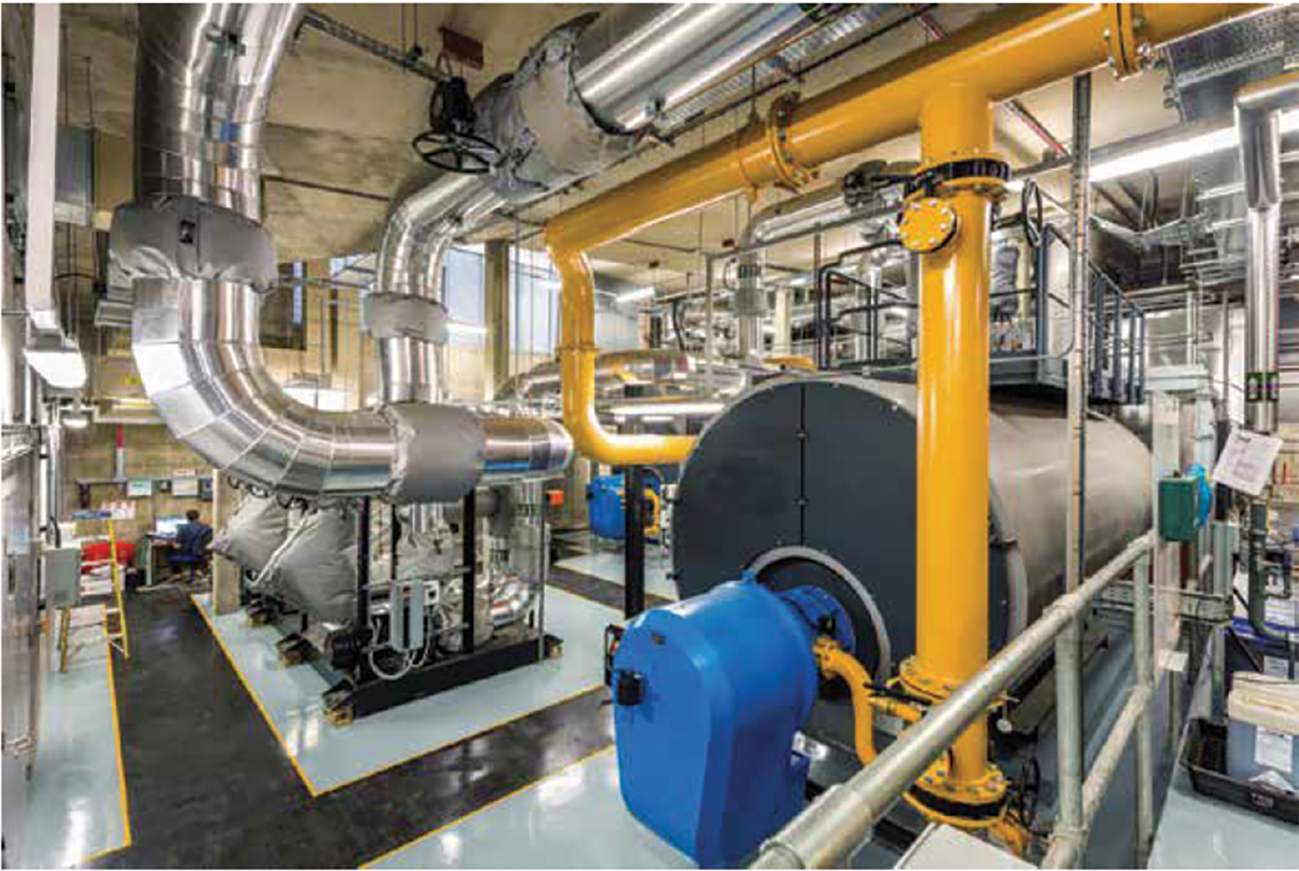
Inside the King’s Cross energy centre
2. Minimum requirements are bigger, deeper and wider
At 240 pages, compared with the original 92, CP1 (2020) is more than just an update. It sets a greater number of minimum requirements (540 in total) that are generally more onerous, and often wider in scope and deeper in requirement. There are also 110 best-practice examples. While the Code is voluntary guidance and not regulation, clients and funders increasingly expect it to be adopted
on projects.
This edition also brings much more clarity, with improved definitions of things such as ‘district heating’ versus ‘communal heating’. There are also better definitions around primary, secondary and tertiary parts of the system that tighten up the terminology throughout the Code – in particular, around heat losses.
3. Client briefing
The 2020 version puts much greater emphasis on the client setting a good brief for the team, across the whole supply chain. What the client writes in the brief should be proved in operation. Unfortunately, in the past, this hasn’t always been the case.
CP1 has begun to have a strong influence on the procurement of heat networks, with clients specifying the Code in tenders, and making it a clear that they want the CP1 requirements and process followed. CP1 also underpins much of the Heat Networks Delivery Unit (HNDU) and Heat Networks Investment Project (HNIP) work by the Department for Business, Energy and Industrial Strategy (BEIS). It has a much better briefing process to help this, and sets out clearer definitions of roles and responsibilities throughout a heat network project.
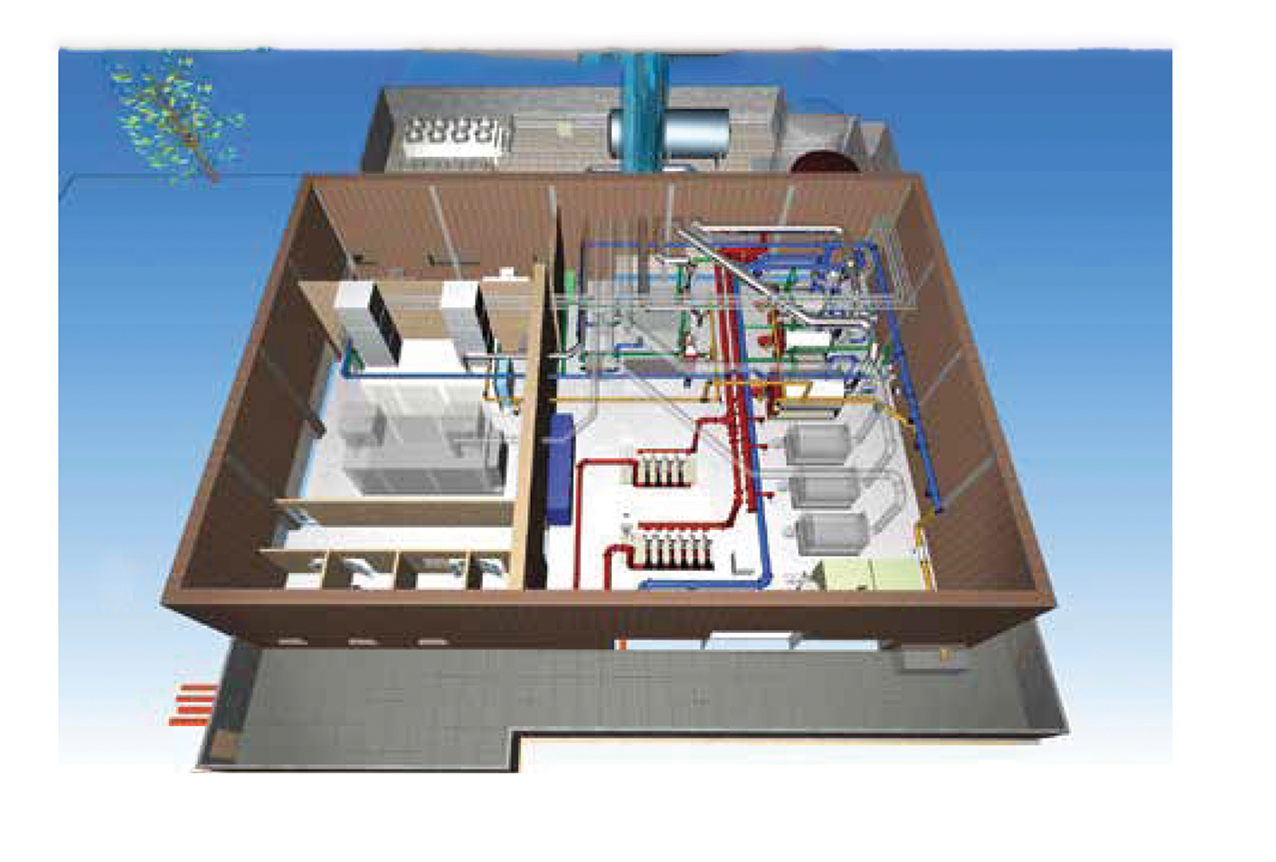
Design of an energy centre created using BIM
4. Performance measuring
Although it was our first shot at a Code, one criticism that could be levelled at CP1 (2015) was the lack of performance targets/metrics. The 2020 version plugs this gap with enhanced performance targets, not least on heat losses from primary, secondary and tertiary pipework, and heat interface units (HIUs). Secondary pipework has long been a problem in residential blocks, with year-round hot corridors because of high heat losses. There are now performance metrics in CP1 on absolute kWh/dwelling to address these issues. The minimum requirement is now 876kWh/dwelling/year and a best-practice target of 550kWh/dwelling/year.
Performance metrics are set at the beginning then tested at each stage of design, construction, commissioning and operation, to ensure each is being met.
5. Diversity and pipe sizing
There has been a fundamental change in the approach to diversity and pipe sizing in CP1 (2020). Rather than having a range of diversity curves from which to choose, there is now a single approach, based on a better interpretation of the Danish DS439. This standard was being misinterpreted by some, and a fully worked example in Annex D, developed by FairHeat, gives greater clarity. Indeed, as a separate exercise BEIS helpfully funded the translation of DS439 into English for the UK market. Promotion of more accurate diversity standards for domestic hot water (DHW), and now guidance for space-heating diversity, will make a real impact, tackling the issue of oversizing.
There is a general shift towards using velocity limits, rather than pressure constraints, for sizing pipework in risers, laterals and terminal runs. This offers a better whole life-cycle approach to energy use. Instead of outdated guidance based on constant flow systems, updated pipe selection criteria are now more suitable for variable flow systems (which a heat network should be). This will have a real impact on heat losses in networks that we develop.
6. Acceptance testing
Even plant that has been formally commissioned can fail to deliver an efficient and reliable service to the heat customer. Unfortunately, it is common for formal commissioning to focus on testing that equipment ‘actually works’ when turned on – often a single item of equipment in isolation – rather than the overall network performance. The commissioning section of CP1 now includes enhanced requirements around onsite acceptance testing to prove it works in practice.
Acceptance Testing is a whole new objective, 5.7, setting minimum requirements on a graduated, risk-based approach to avoid installation and commissioning problems being rolled out across 100% of dwellings.
Best practice is to carry out independent acceptance testing on all dwellings. This ensures that the system meets the required performance standards and that the end customer receives the promised service.
Without adequate acceptance testing, faults will only emerge during the early years of operation, when they are typically more expensive and disruptive to resolve. In particular, CP1 (2020) introduces a requirement for hot-water delivery times – that DHW should be delivered to the tap at 45°C within 45 seconds.
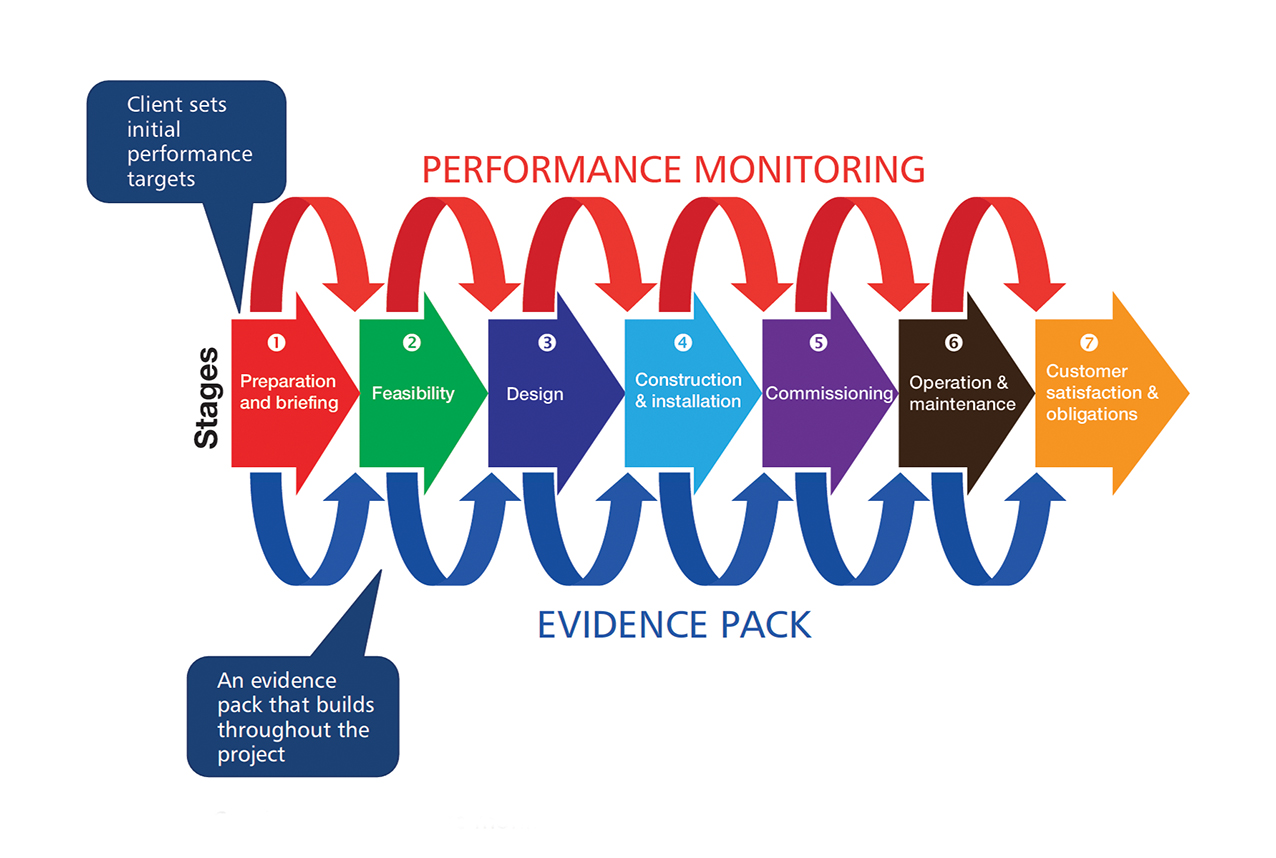
Continual performance monitoring and use of the evidence pack
7. Low return water temperatures
The updated Code puts even more emphasis on achieving low return water temperatures. A system designed with a low return temperature will have reduced peak-volume flowrates and will, therefore, need smaller pipes, leading to lower heat losses and reduced pumping energy.
Although heat networks are generally technology neutral, temperatures do have an impact on the transition to low carbon technologies. The 2015 Code had only 13 mentions of heat pumps; there are now 82. With a greater focus on lower operating temperatures through better design and operation, combined heat and power (CHP) is now mentioned 75 times, and heat pumps 82 times. Looking at the current carbon intensity of the UK grid (181g/kWh average in 2020) the trend to lower temperatures and heat pumps is likely to increase.
8. Heat interface units
There is now a minimum requirement to use tested HIUs. The BESA HIU standard is currently the main test regime www.thebesa.com/ukhiu CP1 best practice states that, where indirect HIUs are specified, they should be used with a tested volume-weighted average return temperature (VWART) of less than 33°C, as defined in the BESA UK HIU Test Regime.
There is also a strong move to reducing DHW supply temperature to 50°C for systems with instantaneous DHW HIUs, instead of 55°C, measured at the HIU outlet instead of at the tap. (See ‘Taking the temperature’, February 2020, CIBSE Journal). Along with lower return temperatures – in hot-water demand and during keep warm – it helps lower the primary temperature and promote the use of heat pumps.
Oversized systems – based on work by Huw Blackwell, of Anthesis, the Code now states that, for typical dwellings (for example three-bed/two-bathroom homes), there should be no need to provide more than 35kW of instantaneous DHW. The ability to apply both space heating and greater DHW diversity will result in a reduction in oversized systems. Onsite measurement and analysis of extensive dwelling-level heat meter data shows this approach to sizing is the right way to go.
Critically, a number of performance metrics are focused on customer outcomes. For example, domestic hot water delivery times and maximum heat network losses
9. Compliance – checklists, evidence pack and a statement of applicability
Compliance, compliance, compliance. CP1 (2020) has an accompanying set of checklists. These are not add-ons; they are fundamental to proving CP1 has been followed, with documented proof and an audit trail across all project stages.
Less visible, but perhaps even more powerful, is the introduction of a Statement of Applicability (SoA), along with hard performance targets, which is a huge benefit when it comes to verifying compliance with CP1. The SoA sets out whether parts of CP1 are not applicable to a particular heat network. With the SoA and new checklists, the updated version seeks to fill the biggest gap from the original document – what is a CP1-compliant heat network? In conjunction with performance metrics, this makes the Code much stronger, as it can be used to hold designers, installers, commissioners and operators to account.
Taken together, this provides a platform for assessing whether CP1 (2020) requirements have been met, in an outcome-based way. Critically, a number of performance metrics are focused on customer outcomes. For example, DHW delivery times and maximum heat network losses. This provides a methodology for assessing whether the network performs well, is efficient, and gives affordable low carbon heat, while ensuring good outcomes for non-domestic and residential customers.
The switch to an outcome-based, verification approach is a fundamental change in CP1 (2020). It is also timely, because it allows opportunities for heat network scheme quality assurance, which will be fundamental as we move toward regulation of the industry.
10. The evidence pack
The checklists include a process for building an evidence pack to monitor and audit progress throughout a project. This makes the entire process of developing a heat network more objective, well-documented, and auditable, with clear handover between parties.
The brief is documented and handed to feasibility consultants; their work goes to the designers, and so on. If anything goes wrong, it is possible to go back through this audit trail and establish what happened, when, and why. In many ways, this protects all parties – the client; their M&E consultants; the build contractors; those commissioning and operating; and, ultimately, the customer.
This isn’t an extra cost; it’s just proving good processes and compliance with CP1. Good design doesn’t need to cost more, but – where it does – it will easily be paid back with savings in capital expenditure, as well as recurring operating expenditure savings.
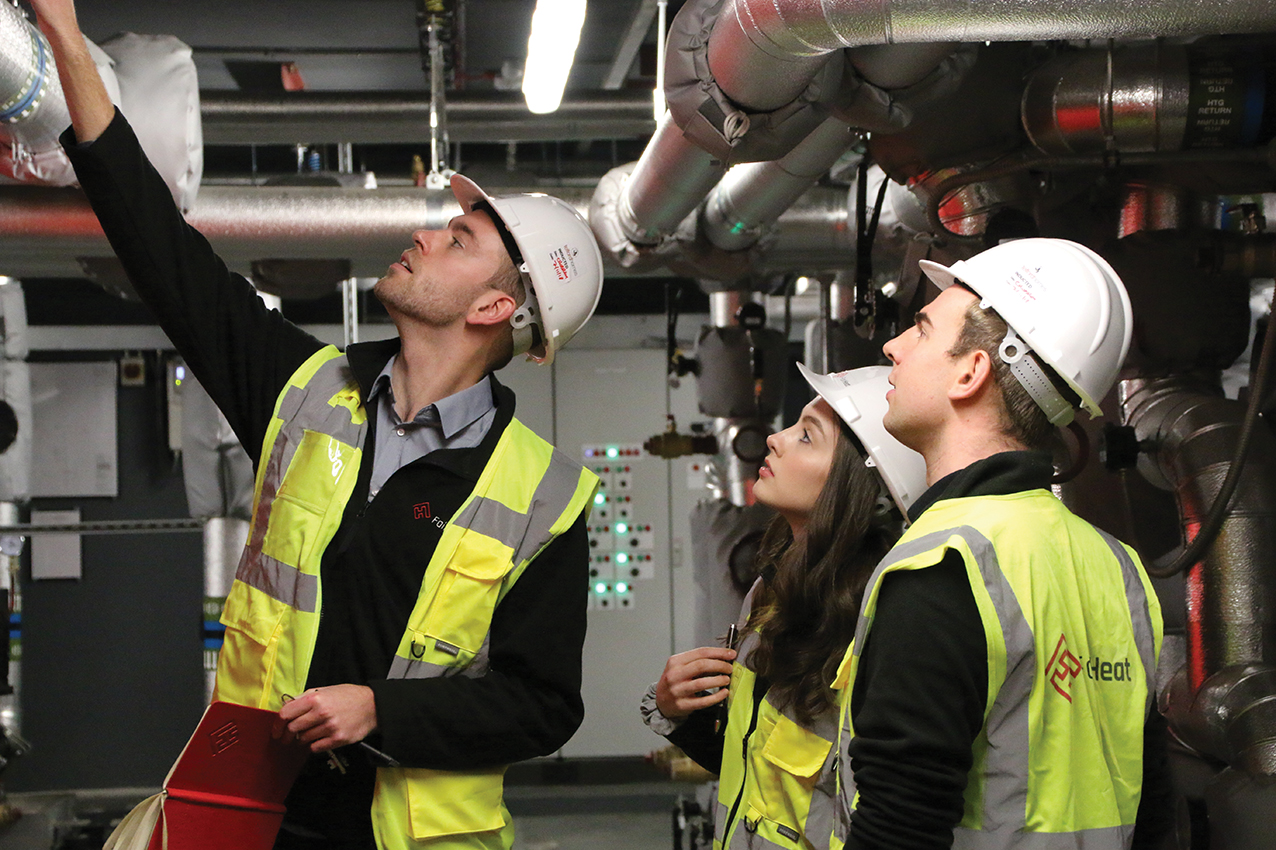
Engineers from FairHeat test a system
The new CP world
There are other big changes in minimum requirements – insulation thicknesses are much greater and heat losses are capped. Controls, keep-warm, metering, water quality, economic optimisation, building the business case
the list goes on. The compliance process with CP1 is also easier to verify, and the fully integrated checklists offer a more structured and robust toolkit for checking compliance.
As authors, we need to thank ADE, CIBSE and BEIS for helping make it happen, as well as all those on the CP1 Steering Group, and the many commentators and contributors. It is hoped this new Code will support the development of a wider heat networks quality assurance scheme, ultimately contributing to the regulation and decarbonisation of the heat sector. This clearly indicates that the heat network market is maturing and is set to make a big impact on decarbonising heat in the UK.
This second edition remains a work in progress, however. There is a clear need for a more detailed evidence base, and more work is needed to develop further guidance and verification in the long term. But CP1 (2020) is a very significant step forward and aims to take the heat network sector to the next level.
- CP1 is available at www.cibse.org/knowledge
- About the authors: Professor Phil Jones, Building Low Carbon Solutions & London South Bank University. Paul Woods, independent consultant. Martin Crane, Carbon Alternatives
- With thanks to Gareth Jones, at FairHeat, and Ruben Vos, at Hysopt



